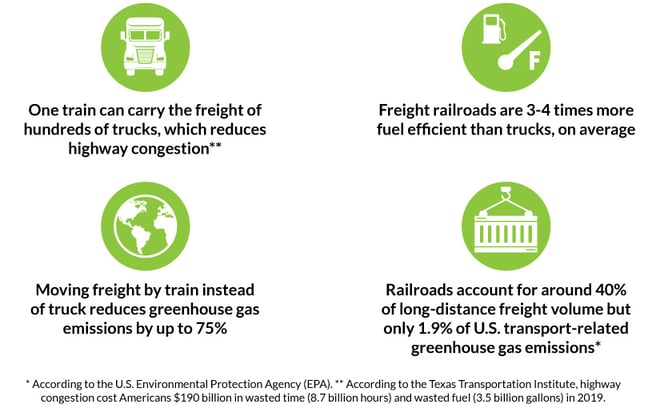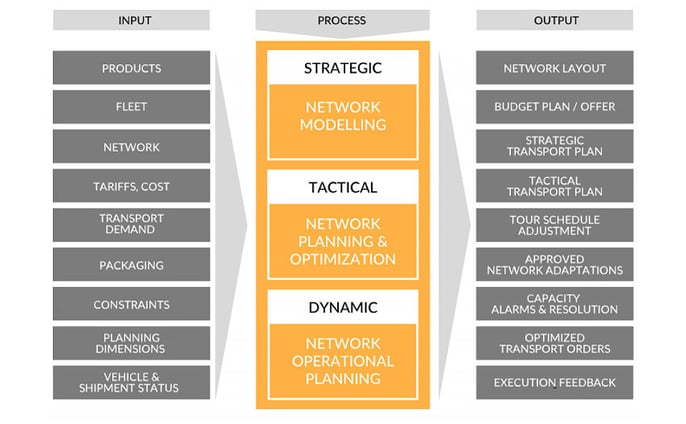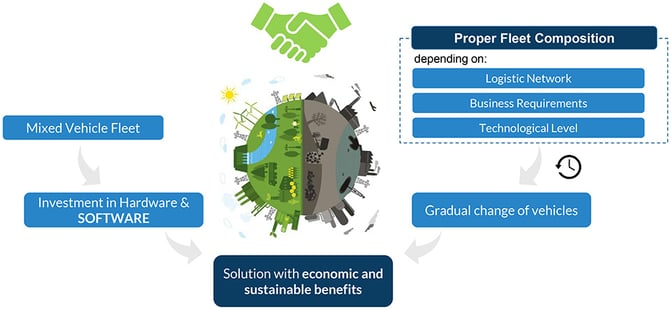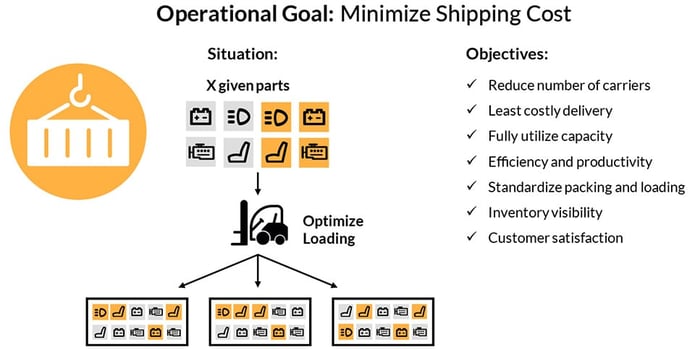The Six Best Logistics Solutions For Earth Day
Keith LaBotz - April 20, 2023

Few areas in a supply chain can significantly advance supply chain sustainability and profits, like logistics improvements. As Earth Day approaches, there’s no better time to explore solutions that support this strategy. Simply put, logistics efficiency reduces resources consumed when moving goods through a supply chain, and that involves transportation. According to MIT, freight accounts for roughly 8% of greenhouse gases, and transportation is also the core of every supply chain, so it impacts every aspect of business operations. Transportation is a leverage point for minimizing supply chain costs and emissions.
In this post, we recognize Earth Day by examining six solutions from flexis AG that optimize transportation to improve a company’s financial and environmental position.
Green Solution 1: Multimodal Optimization
Multimodal transportation utilizes a combination of different transportation modes to deliver freight. Combining the strengths of different modes can significantly reduce transportation costs and carbon emissions.

For example, it’s challenging to beat trucks for low-cost, agile door-to-door delivery, and intermodal rail is among the most economical modes of long-distance transportation. Rail freight also reduces greenhouse gas emissions by up to 75% compared to long-haul trucking. Furthermore, using a second mode of transportation helps mitigate supply chain risks by avoiding disruptions in any one transportation carrier.
flexis’ Transportation Planning and Scheduling automatically combine multiple orders into shipping containers for long-distance transport by rail. Containers picked up by truck from the destination railyard can be delivered for final distribution to another carrier or distributed directly to customers as the planning dictates.
Green Solution 2: Shipment Consolidation
Consolidating multiple orders and line items into a single shipment minimizes the number of shipments tendered, reducing the number of trips required to deliver orders. The same strategy combines multiple shipments into a larger load, allowing multiple deliveries while enroute to a destination.
The flexis Transporation and Planning solution automates these consolidations with a valuable distinction from TMS solutions that consolidate shipments - flexis optimizes the supply chain network.

Unlike most TMS consolidations that manage shipping operations, flexis’ supply chain optimization model considers dependencies between transportation and other supply chain activities:
- Warehouse inventory levels, customer demand, and lead times are evaluated to meet stakeholder expectations like service commitments.
- Production and distribution schedules are changed to facilitate consolidations, minimize constraints, and avoid operational conflicts.
- Transportation decisions consider a company’s strategic, tactical, and daily planning objectives.
Solution 3: Routing Optimization
Last-mile delivery is typically the most expensive and carbon-intensive part of transportation, and flexis offers a Vehicle Routing and Scheduling (VRS) solution to optimize it. Flexis’ solution optimizes delivery plans for corporate fleets to minimize the miles driven in a tour. It automatically updates delivery routes in real-time as demand and conditions like traffic patterns change.

Green Solution 4: Collaborative Transportation
Collaborative transportation involves collaborating with other transportation providers to share resources and reduce costs and emissions. For example, flexis customers can collaborate on backhaul arrangements, where a vehicle delivers its load of shipments and then backhauls to its origin with goods picked up from suppliers.
flexis Transportation Planning and Scheduling helps shipping operations identify these collaboration opportunities to utilize partially filled trailers fully.
Green Solution 5: Alternative Fuel Vehicles
Alternative fuel vehicles, such as electric and hydrogen-powered trucks, can significantly reduce emissions compared to traditional gasoline or diesel vehicles. While the initial investment in alternative fuel vehicles may be higher, it is possible to identify the most cost-effective roles in a transportation operation.

flexis Transporation Planning and Scheduling runs simulations to identify the optimal ratio of alternative fuel vehicles in a fleet. It also generates daily delivery schedules that consider the performance of each vehicle type so that a mixed fleet can minimize overall emissions and costs.
Green Solution 6: Loading Optimization
Loading optimization is a critical component of sustainable logistics, and flexis' loading optimization solution uses advanced algorithms to analyze the dimensions and weight of each product, to utilize transportation capacity more effectively.

This solution determines the optimal arrangement of products within a vehicle’s cargo bay or shipping container. It guides warehouse crews on loading so space is fully utilized, and the unloading sequence supports optimized delivery routes. The result is labor savings, fewer trips for delivery, lower vehicle maintenance costs, and lower emissions.
Conclusion
Implementing sustainable logistics solutions benefits the environment and enhances profitability and agility. Adopting the suggested solutions from flexis helps supply chain professionals make a positive impact on Earth Day and beyond.
If you want to learn more get your Guide to Logistics 4.0
In this Guide you will learn:
-
Why a strategic process in transportation planning is a top priority for digitalization
-
What megatrends will increase supply chain volatility
-
How to manage it
LATEST POSTS
- Understand Circular Economy in The Manufacturing Industry
- How Can Industry 4.0 IT Integration Be Achieved Smoothly?
- The Significance of Order Sequencing in Discrete Manufacturing
- How to improve your Supply Chain Management: The Power of Control Towers
- Optimizing Human Resource Scheduling in Manufacturing: A Technological Approach



